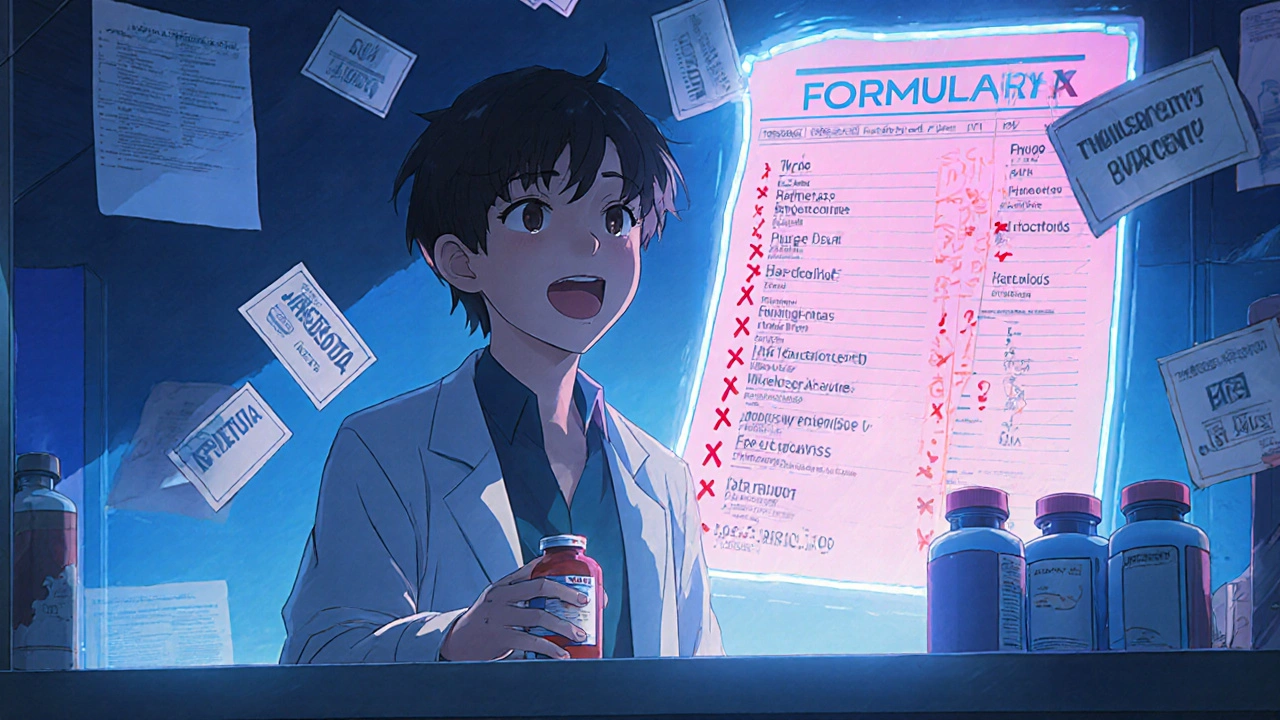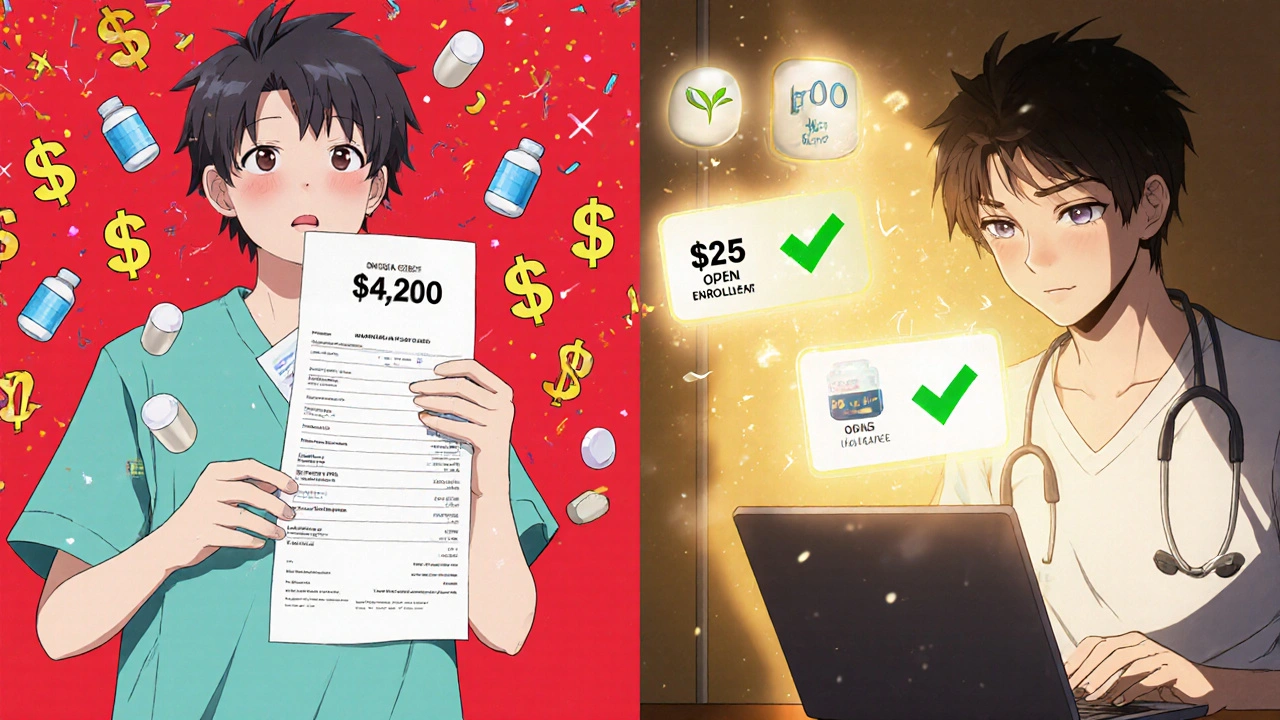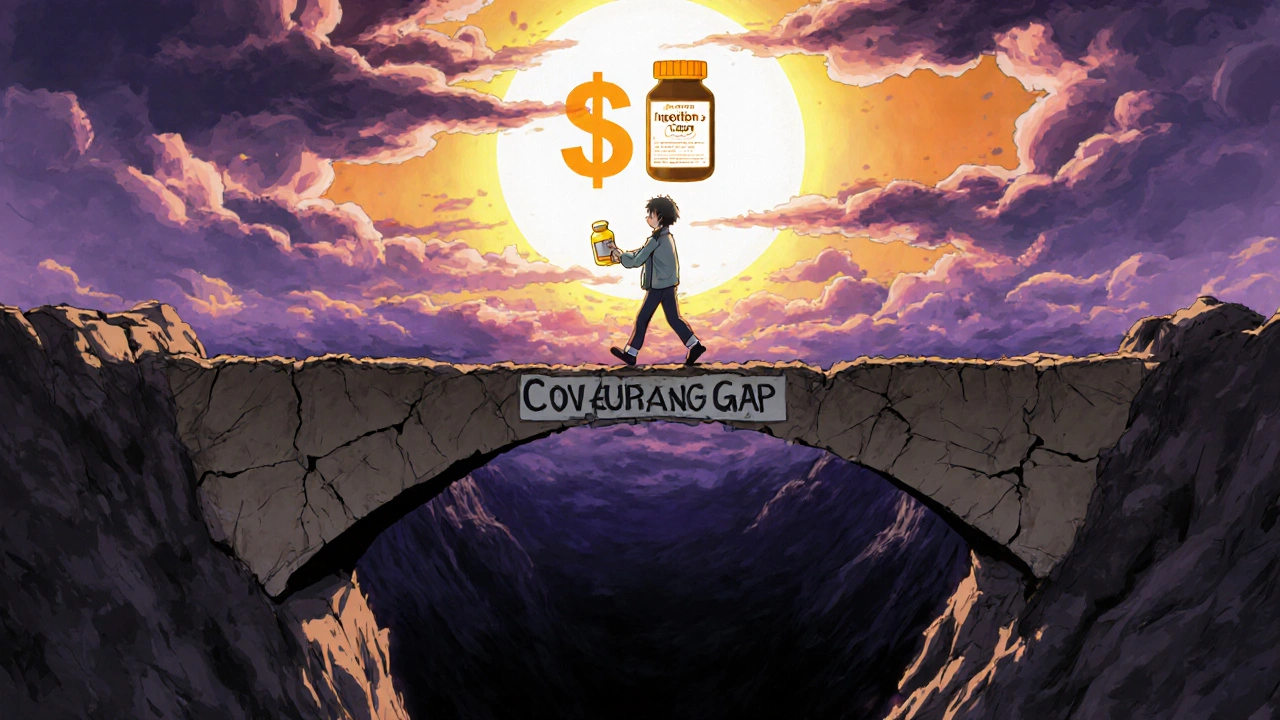Prescription Insurance Coverage: Key Questions to Ask Your Plan to Avoid High Drug Costs

Every year, millions of Americans pay hundreds or even thousands of dollars out of pocket for prescriptions they thought were covered. It’s not a mistake - it’s a gap in understanding. Prescription drug coverage isn’t one-size-fits-all. Even if your plan says it includes medications, that doesn’t mean your medications are covered - or that you’ll know how much you’ll actually pay until you’re at the pharmacy counter.
Is your specific medication on the formulary?
The first question you must ask: Is my medication on the plan’s formulary? A formulary is the list of drugs your insurance covers. It’s not just a nice-to-know - it’s the foundation of your drug costs. Plans organize drugs into tiers, and each tier has a different price. Tier 1 is usually generic drugs with a $10 copay. Tier 2 is preferred brand-name drugs, often $40. Tier 3 is non-preferred brands - you might pay $100 or more. Tier 4 is specialty drugs, like those for MS, cancer, or rheumatoid arthritis, and those can cost $1,000+ per prescription with coinsurance.Here’s the catch: two plans from the same insurer can have completely different formularies. One might cover your diabetes drug in Tier 2. Another might put it in Tier 3 - or not cover it at all. You can’t assume. You have to check. Use your plan’s online tool or call customer service and give them the exact name and dosage of each medication you take. Don’t rely on the generic name alone - brand names matter too.
What’s your deductible, and does it apply to prescriptions?
Many people think their insurance starts paying for drugs right away. It doesn’t. Most plans have a deductible - the amount you pay before coverage kicks in. For Bronze Marketplace plans, that deductible can be as high as $6,000. And yes, that applies to prescriptions too. If you take a $200 monthly pill and your plan has a $6,000 deductible, you’re paying $2,400 out of pocket just to get through the year before your insurance helps.Some plans have separate prescription deductibles - lower than your medical deductible. Others combine them. You need to know which one you have. If you take multiple medications, a plan with a $150 prescription deductible and lower premiums might save you more than a plan with no deductible but higher monthly costs. Compare the math. For someone on 12 maintenance drugs, a Gold plan with a $5,050 out-of-pocket max can save $1,842 a year over a Bronze plan, according to CMS data.
Are there pharmacy network restrictions?
Your plan might cover your drug - but only if you fill it at a specific pharmacy. About 78% of Marketplace plans restrict you to a network of pharmacies. Walk into an out-of-network pharmacy, and you could pay 37% more - or get billed the full price. That’s not a surprise. It’s a trap.Check if your usual pharmacy is in-network. If you use a mail-order service, confirm it’s approved. Some plans require you to use mail-order for maintenance drugs after a certain number of fills. If you switch pharmacies mid-year and your plan doesn’t cover your new one, you’re stuck paying full price. Don’t wait until you’re out of pills to find out.

Do you need prior authorization or step therapy?
Even if your drug is on the formulary, you might need approval before you can get it. That’s called prior authorization. Your doctor has to prove to the insurer that you’ve tried cheaper alternatives first - or that your condition requires this specific drug. About 28% of Medicare Part D prescriptions require this.Step therapy is even more frustrating. You’re forced to try a cheaper drug first - even if it didn’t work for you before. For example, your plan might require you to try three generic painkillers before covering your prescribed biologic. If you’ve already tried them and they failed, you’ll need your doctor to appeal. That process can take weeks. During that time, you might go without your medication. Ask: Does my drug require prior authorization or step therapy? If yes, ask how long the approval process usually takes.
What’s the cost in the coverage gap (donut hole)?
If you’re on Medicare Part D, you need to understand the coverage gap - also called the donut hole. In 2024, once your total drug costs reach $5,030, you enter the gap. You pay 25% of the cost until you hit $8,000 in total spending. After that, catastrophic coverage kicks in.That 25% might sound low - until you’re paying it on a $12,000 specialty drug. For someone taking multiple high-cost medications, this gap can add thousands to their annual bill. The good news? Starting in 2025, the donut hole is being eliminated. The bad news? Until then, you’re still on the hook.
What’s the out-of-pocket maximum for drugs?
All plans have an annual out-of-pocket maximum - the most you’ll pay for covered services in a year. But for prescriptions, that number can vary wildly. Bronze plans cap out at $9,450. Platinum plans cap at $3,050. If you take expensive drugs, a higher premium plan with a lower cap might save you money in the long run.One user on Reddit shared how their Silver plan had a $500 copay maximum for specialty drugs - but they didn’t know it. When their $4,200/month medication was billed at full price, they got hit with a $3,700 charge. That’s because the cap only applies after you’ve paid the full cost. If you don’t know the rules, you’re paying more than you should.

How does the plan handle insulin and other chronic condition drugs?
Insulin is a game-changer. In 2025, Medicare Part D will cap insulin costs at $35 per month. But that’s only for Medicare. Private plans aren’t required to follow that rule - yet. Some already do. Others don’t. Ask: Is insulin covered with a $35 copay? What about other chronic condition drugs like EpiPens, GLP-1s for weight loss, or injectables for autoimmune diseases?Some insurers are starting to use value-based insurance design - lowering copays for drugs that treat chronic conditions because they prevent expensive hospital visits. Ask if your plan does this. If you have diabetes, heart disease, or asthma, this could save you hundreds a year.
When can you change plans?
You can’t switch plans anytime. For Marketplace plans, open enrollment runs from November 1 to January 15. For Medicare Part D, it’s October 15 to December 7. If you miss it, you’re stuck until next year - unless you qualify for a special enrollment period (like losing other coverage or moving).Don’t wait until you get a surprise bill to check your coverage. Use the HealthCare.gov or Medicare Plan Finder tools during open enrollment. Enter your exact medications and preferred pharmacy. Compare plans side-by-side. Spend 20 minutes. The Urban Institute found people who do this save $1,147 a year on average.
What’s changing in 2025?
The Inflation Reduction Act is reshaping drug coverage. Starting in 2025, Medicare Part D beneficiaries will have a $2,000 annual out-of-pocket cap on drugs. Insulin will be capped at $35 per month. And Medicare will start negotiating prices for 10 high-cost drugs in 2026 - with more added each year. This could lower premiums and reduce out-of-pocket costs across the board.But these changes only apply to Medicare. Private insurers aren’t required to follow suit. So if you’re on an employer plan or a Marketplace plan, you’re still at the mercy of your insurer’s pricing. That’s why asking the right questions now matters more than ever.
What if my prescription isn’t covered at all?
If your drug isn’t on the formulary, ask if your plan offers a formulary exception. You or your doctor can request it by submitting documentation that shows why you need this specific drug - for example, if alternatives caused side effects or didn’t work. Many plans approve these requests, especially for chronic conditions. Don’t assume it’s impossible - ask.
Can I switch plans mid-year if my medication gets removed from the formulary?
Usually, no. But if your plan changes its formulary and removes a drug you’re taking, you may qualify for a special enrollment period. Contact your insurer immediately. They’re required to let you switch to another plan without waiting for open enrollment if your medication is no longer covered. Document everything - email, call logs, case numbers.
Do all plans cover the same drugs?
No. Even plans from the same company can have different formularies. A Silver plan from Blue Cross might cover your antidepressant, while a Gold plan from the same company doesn’t. Always compare formularies side by side - don’t assume coverage is the same across tiers or plan types.
How do I find out if my plan covers a new medication?
Call your insurer’s pharmacy help line and give them the exact drug name, dosage, and NDC code (found on the pill bottle). Don’t rely on the website - those tools sometimes lag behind real-time formulary updates. Ask for a written confirmation. If they say yes, get it in writing. If they say no, ask why and whether an exception is possible.
Are over-the-counter (OTC) drugs covered?
Most plans don’t cover OTC drugs unless they’re prescribed by a doctor. Some Medicare Advantage plans offer OTC allowances - like $50 a month for pain relievers or allergy meds - but you have to use a specific catalog. Check your plan’s benefits guide. If you take daily OTC drugs, factor that cost into your total medication budget.
If you take any prescription regularly, you’re not just paying for pills - you’re paying for peace of mind. The difference between a $10 copay and a $1,000 bill isn’t luck. It’s knowing the right questions to ask - and asking them before you sign up.
